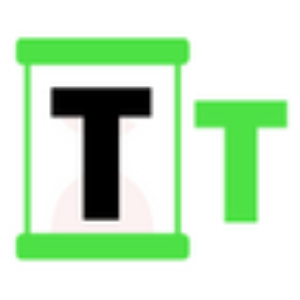Market Pulse
In a significant strategic move, blockchain payments giant Ripple is aggressively intensifying its efforts to bridge the gap between traditional finance and the burgeoning crypto economy, bringing its native token XRP and its recently announced USD-pegged stablecoin, RLUSD, into the mainstream spotlight. This concerted push, reportedly involving key experts engaging with mainstream media, signals Ripple’s clear intent to position its offerings not merely as speculative assets, but as fundamental components of the future financial infrastructure. As the digital asset landscape matures, capturing broader public and institutional understanding becomes paramount for widespread adoption, and Ripple appears committed to leading this charge.
Ripple’s Strategic Mainstream Engagement
Ripple’s proactive approach to mainstream media underscores a pivotal shift in its communication strategy. Moving beyond crypto-native channels, the company is aiming to educate a wider audience – from retail investors to traditional financial institutions – about the tangible benefits and practical applications of its blockchain solutions. This involves clearly articulating the problems XRP and RLUSD solve, such as inefficient cross-border payments and the need for reliable, programmable digital currencies. By leveraging expert voices, Ripple can demystify complex blockchain concepts and highlight the real-world utility of its ecosystem, fostering greater trust and encouraging broader integration.
- Demystifying Blockchain: Simplified explanations for non-technical audiences.
- Highlighting Utility: Focusing on real-world applications like faster, cheaper remittances.
- Building Trust: Engaging credible experts to vouch for technology and security.
- Regulatory Clarity: Presenting a clear narrative that aligns with evolving global regulations.
XRP’s Evolving Role Beyond Speculation
For years, XRP has been primarily viewed as a cryptocurrency for trading and speculation. However, Ripple’s renewed mainstream focus seeks to re-contextualize XRP as an essential utility token, particularly for its On-Demand Liquidity (ODL) service. This service utilizes XRP to facilitate instant, low-cost cross-border transactions without pre-funding accounts, effectively solving a major pain point for banks and payment providers. By showcasing these practical applications through mainstream channels, Ripple aims to cultivate a narrative where XRP is recognized for its fundamental value in powering efficient global finance, rather than solely for its price movements. This narrative shift is critical for institutional confidence and long-term ecosystem growth.
Introducing RLUSD: Ripple’s Stablecoin Vision
The introduction of RLUSD (Ripple-backed USD) is another cornerstone of Ripple’s mainstream strategy. As a USD-pegged stablecoin, RLUSD is designed to offer stability, transparency, and auditability, appealing directly to institutional clients and enterprises. It aims to serve as a bridge asset for programmable finance and a robust option for institutional DeFi applications. By ensuring RLUSD is fully backed by fiat reserves and short-term government debt, Ripple addresses key concerns around stablecoin reliability and regulatory compliance, making it an attractive proposition for traditional financial entities hesitant to engage with more volatile digital assets. Its integration into the XRP Ledger further enhances its utility and potential for seamless interoperability.
Connecting Traditional Finance with the Digital Future
Ripple’s dual focus on XRP’s utility and the stability of RLUSD exemplifies a broader industry trend: the inevitable convergence of traditional financial systems with decentralized technologies. By actively pursuing mainstream engagement, Ripple is not just promoting its products; it is helping to shape the narrative around how digital assets can enhance, rather than disrupt, existing financial frameworks. This involves direct dialogue with financial leaders, policymakers, and the public, emphasizing collaboration and the potential for a more inclusive, efficient, and interconnected global financial system.
Conclusion
Ripple’s deliberate and proactive push to integrate XRP and its new stablecoin, RLUSD, into mainstream discourse marks a significant inflection point for the company and the wider crypto industry. By focusing on utility, stability, and expert communication, Ripple is endeavoring to solidify its position as a trusted partner for traditional finance looking to navigate the digital age. This strategy, if successful, could unlock new avenues for adoption, drive greater liquidity into the XRP Ledger, and ultimately contribute to a more interconnected and efficient global financial ecosystem.
Pros (Bullish Points)
- Increased mainstream awareness and adoption for XRP and Ripple's ecosystem.
- RLUSD could attract significant institutional capital and enhance DeFi liquidity with a regulated stablecoin.
- Strengthens Ripple's position as a critical bridge between traditional finance and the digital asset space.
Cons (Bearish Points)
- Regulatory uncertainties still loom for XRP in some jurisdictions, potentially hindering full mainstream acceptance.
- Competition in the stablecoin market is intense, requiring RLUSD to rapidly prove its unique value proposition.
- Market perception of XRP remains divided, which could pose a challenge in fully shifting its narrative to a utility token.



